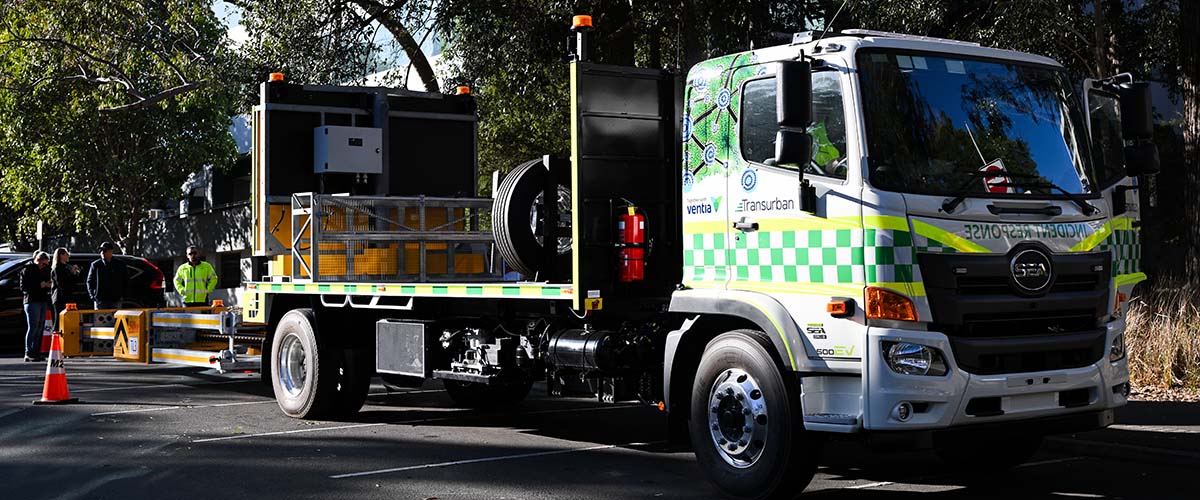When there is an accident or break-down on our motorways, incident response vehicles provide our first line of response. They arrive at the site within minutes, deploy their hydraulic-powered crash pad and create a physical buffer to protect road workers and motorists from potential high-speed accidents.
Incident response vehicles travel up to 150 kilometres per day and have their engines running for long stretches. So, together with our operations partner, Ventia, we have deployed a new fully-electric incident response vehicle – the first of its kind in Australia. Compared to a diesel vehicle, our vehicle is expected to save around 50 tonnes of greenhouse gas (GHG) emissions per year.
“The relationship that we have with Ventia is incredibly important to achieving successful sustainability solutions from both an environmental and social sustainability perspective,“ said Transurban’s Head of Sustainability Amy Hogan.
“It's an exciting time as we combat climate change and support the drive to a decarbonised economy.”
The incident response vehicle will be charged at the Hills M2 Motorway control centre, drawing on renewable energy sources. This is just one way we’re working to meet net zero by 2050, with renewable energy already powering 80% of the network’s lights, cameras and technology.
Help us name the vehicle to win
We are calling upon NSW primary and secondary school students to help us name the newest addition to our fleet! One lucky school student will have the opportunity to name our electric incident response vehicle, with Transurban’s competition to win a $300 Mastercard and a Food Garden for their school – entries close 31 July 2023.

